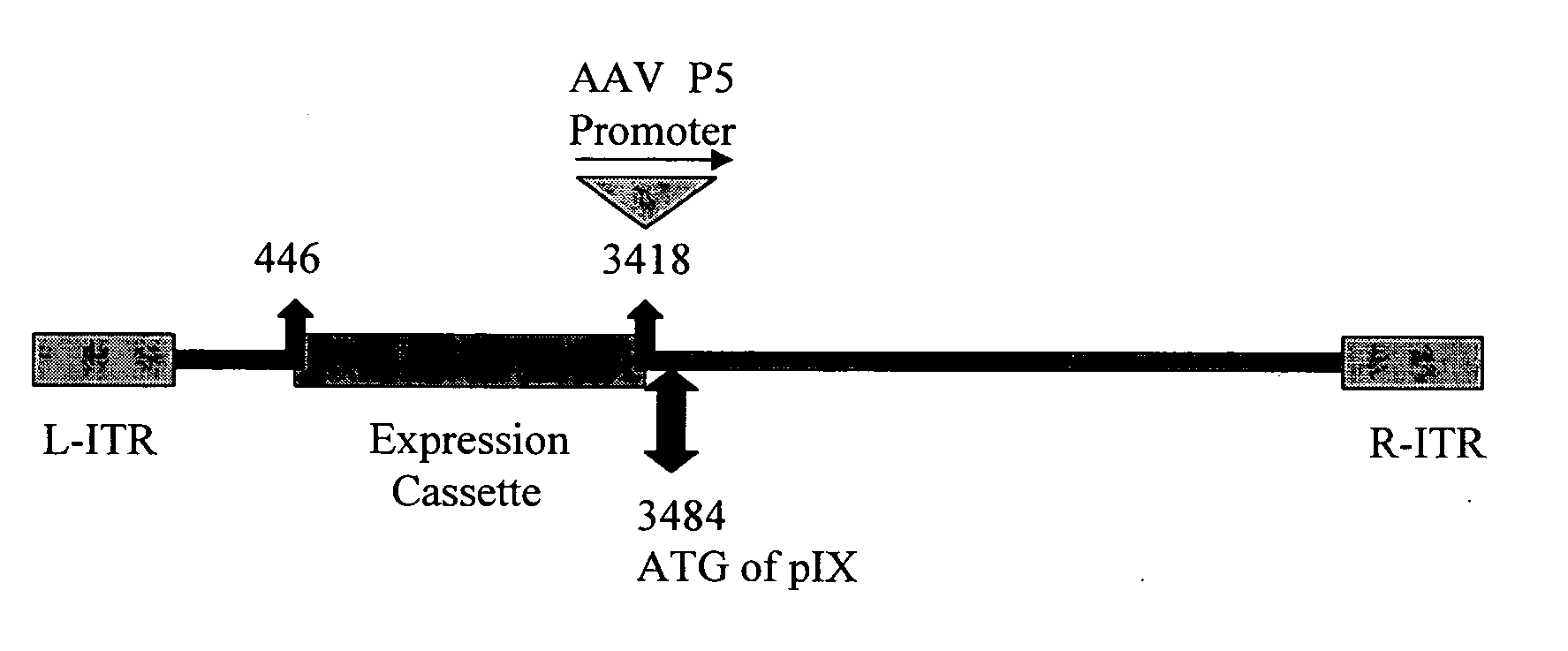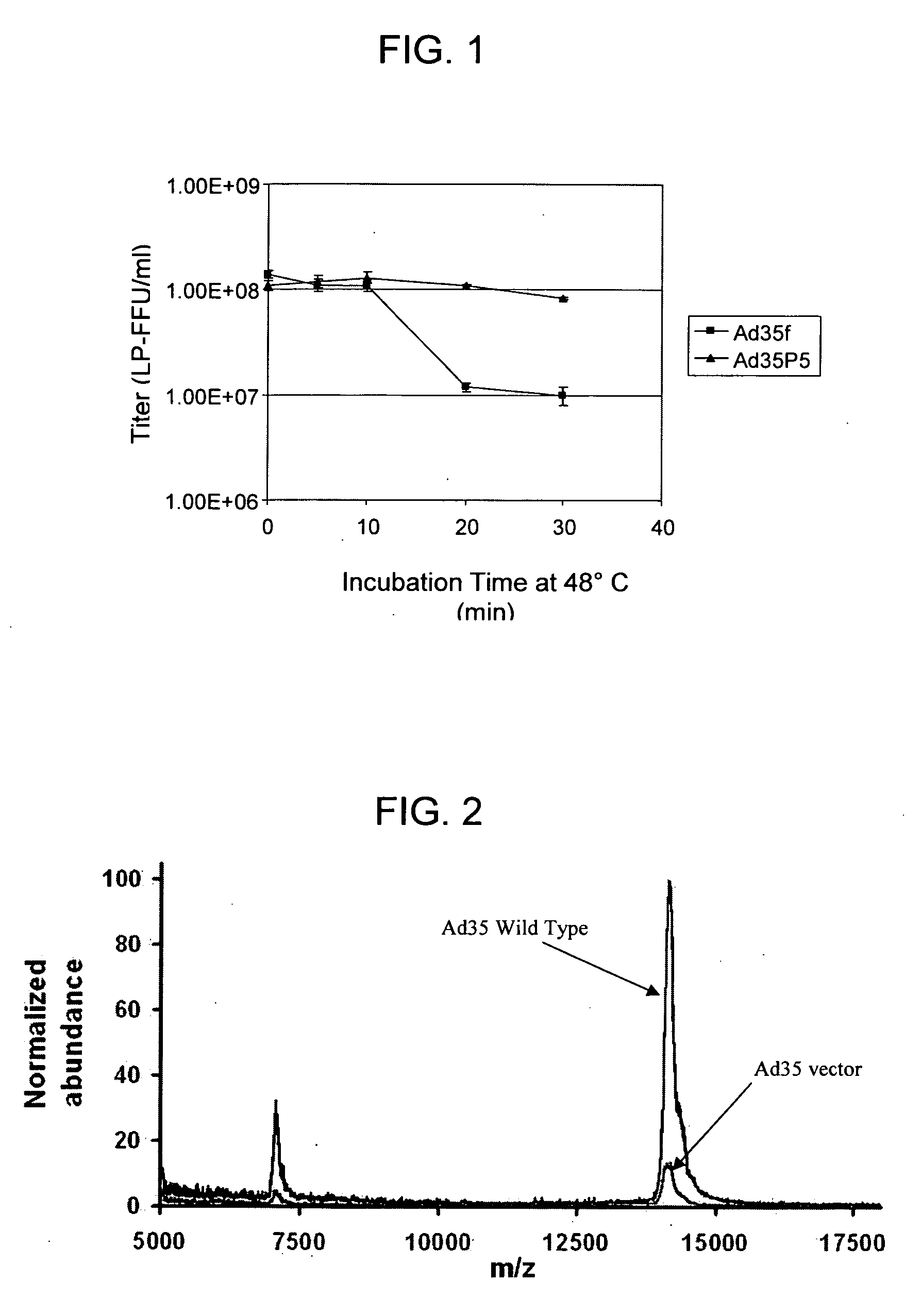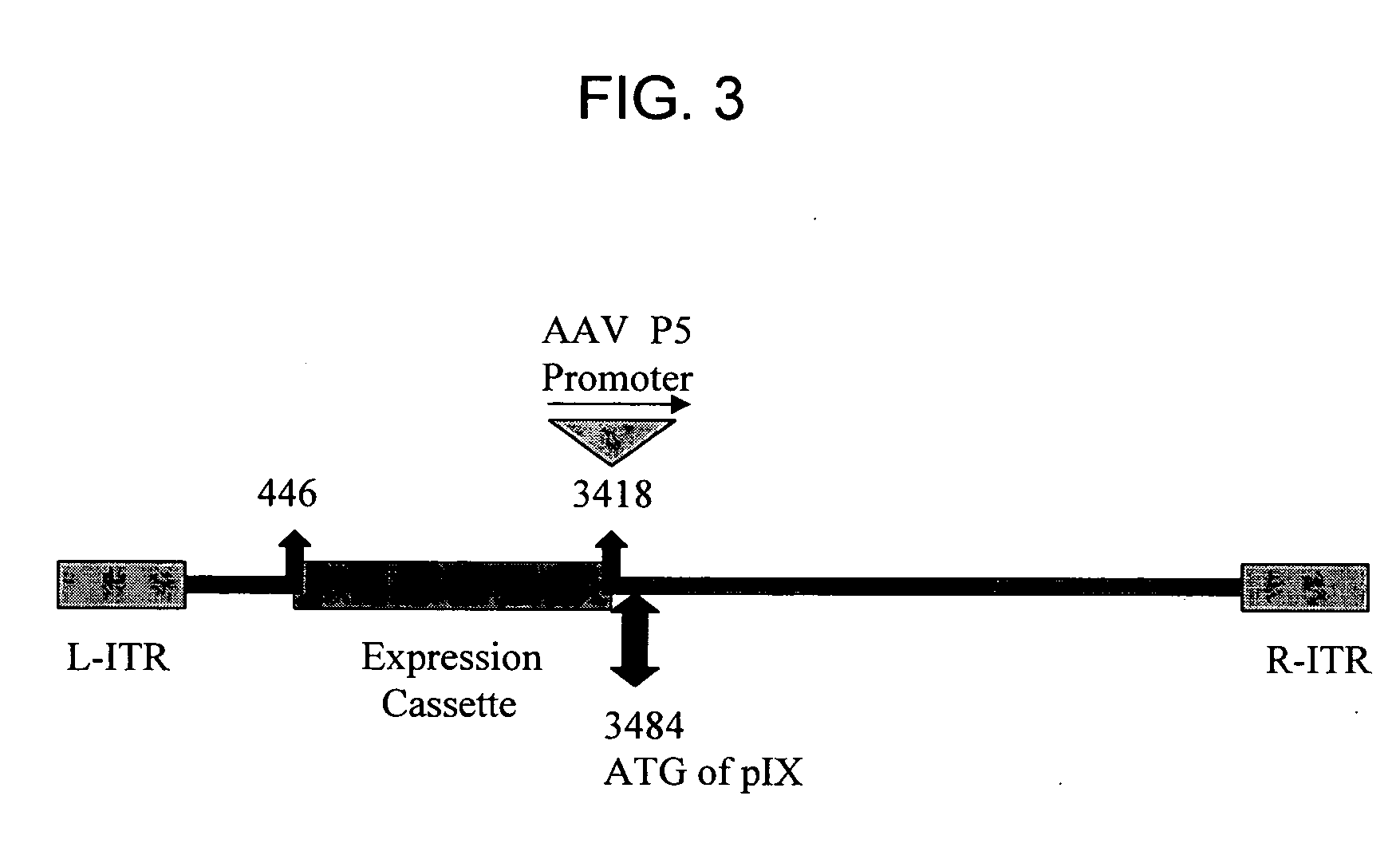Adenoviral vector-based vaccines
a technology of adenoviral vectors and vaccines, applied in the field of recombinant adenoviral vectors, can solve the problems of reducing the effectiveness of vectors in delivering biologically relevant amounts of gene products, affecting the delivery of therapeutics to sites, and affecting so as to enhance the stability and/or packaging capacity of adenoviral vectors. the effect of stability and/or packaging
- Summary
- Abstract
- Description
- Claims
- Application Information
AI Technical Summary
Benefits of technology
Problems solved by technology
Method used
Image
Examples
example 1
[0087] This example demonstrates the generation of an E1-deleted adenoviral vector based on a subgroup F adenovirus.
[0088] The full genome of a desired serotype 41 (Ad41) adenoviral vector was constructed as a single plasmid. First, the full-length Ad41 wild-type genome was constructed in plasmid form. The wild-type Ad41 genome was recombined into a small plasmid by the AdRescue method. Briefly, the small plasmid (i.e., the “recipient plasmid”), pAd41RSQ.BN, was constructed through several sub-cloning steps. Ad41 genome sequences corresponding to the first 405 base pairs (bp) of the wild-type Ad41 genome were amplified by polymerase chain reaction (PCR) and TOPO-cloned (Invitrogen) into pCR2.1TOPO, thereby creating pCR2.1TOPO.Ad41Left. The left end of the Ad41 adenoviral genome was subcloned by XhoI restriction digestion cloning into pKSII to create plasmid pKSIIAd41(1-405)Left. The EcoRI / PmeI fragment from pKSIIAd35(1-446)Left.Cos (see Example 2) containing a lambda cos site and l...
example 2
[0091] This example demonstrates the generation of an E1-deleted adenoviral vector based on a subgroup B adenovirus.
[0092] The full genome of a desired serotype 35 (Ad35) adenoviral vector was constructed as a single plasmid. First, the full-length Ad35 wild-type adenoviral genome was constructed in plasmid form. The wild-type Ad35 adenoviral genome was recombined into a small plasmid by the AdRescue method. Briefly, the small plasmid (i.e., the “recipient plasmid”), pAd35RSQ.BN, was constructed through several sub-cloning steps. Ad35 genomic sequences corresponding to the first 446 bp of the wild-type Ad35 adenoviral genome were amplified by PCR and TOPO-cloned (Invitrogen) into pCR2.1TOPO to create pCR2.1TOPO.Ad35Left. The Ad35 left end genomic sequence was subcloned by XhoI restriction digestion cloning into pKSII to create plasmid pKSIIAd35(1-446)Left. The AscI fragment from GenVec's pACE series of plasmids (McVey et al., Journal of Virology, 76 (8), 3670-3677 (2002)) containin...
example 3
[0095] This example demonstrates the generation of an E1 / E3-deleted adenoviral vector based on a subgroup B adenovirus.
[0096] Ad35 (GenBank Accession #AY128640) has five XbaI sites at nucleotides 23698, 27240, 27924, 28735 and 29726. By partial XbaI digestion of Ad35, ligation and in vitro packaging of pAC35E1 (“BN cassette,” discussed above), an E3 (XbaI) deletion was generated in the Ad35 virus that spans 2486 bp of sequences contained between nucleotides 27241 and 29726. This E3 XbaI deletion removes nucleic acid sequences that encode the E3 15K, 18.5K, and 20.3K proteins. The BN cassette in the E1 region was replaced with an expression cassette containing a CMV promoter driving expression of HIV gp140dCFIdv12(B) to create pAC35E1(RL.CMVint.gp140B.SV40)E3(Xba). 293-ORF6 cells were transfected with this plasmid and a cytopathic effect was observed on the first passage following transfection. The Ad35gp140(B).E3(Xba) vector was expanded over one additional passage and the presence...
PUM
| Property | Measurement | Unit |
|---|---|---|
| pH | aaaaa | aaaaa |
| pH | aaaaa | aaaaa |
| pH | aaaaa | aaaaa |
Abstract
Description
Claims
Application Information
 Login to View More
Login to View More - R&D
- Intellectual Property
- Life Sciences
- Materials
- Tech Scout
- Unparalleled Data Quality
- Higher Quality Content
- 60% Fewer Hallucinations
Browse by: Latest US Patents, China's latest patents, Technical Efficacy Thesaurus, Application Domain, Technology Topic, Popular Technical Reports.
© 2025 PatSnap. All rights reserved.Legal|Privacy policy|Modern Slavery Act Transparency Statement|Sitemap|About US| Contact US: help@patsnap.com



